by Shane L. Larson
All too often, we think of STEM as some kind of activity related to education — it is, after all, an acronym formed from “possible fields of study” in school: Science, Technology, Education, Mathematics.
But this is a great failure of imagination on our part. STEM is bigger than simply education, or careers. STEM is bigger than K-12 kids or young adults navigating college.
This week’s #AdlerWall segment is a hashtag that reads simply: #XPLORESTEM. While your high school guidance counselor may have used this notion to encourage you to think about certain majors in college, I’m going to use it as an aperture to an elegant truth: you do #XPLORESTEM every day, you just might not recognize it.
STEM, quite simply, is a way of life. One that we are all immersed in everyday, and one that we all appreciate and enjoy whether we realize it or not. But more importantly, STEM is something we practice every day without realizing it. It is something we were all once fantastic at (and very likely still are), but we’ve forgotten. We’ve listened to all those people who watch us through our lives say “you don’t think very clearly”, “you’re not good at math”, “science isn’t for you.” We’ve melded those soundbites with the seeds of doubt that talk to us in the quiet alone hours before the day dawns; we’ve sown and watered those seeds with inferiority gleaned from watching people around us who are seemingly unbaffled by IRS tax codes, computer operating systems, or the irrational math required to order pizza for teenagers.
I’m here to tell you it is time to burn that field of weeds you have sown.
I’m a theoretical physicist. I spend my days being baffled by really frickin’ hard stuff in astrophysics. I spend a lot of time teaching students and people just like you. I like to think I know what I’m talking about when I talk about STEM. So trust me when I say this:
We are all explorers. We are all scientists. We are all problem solvers. We are all critical thinkers. We just don’t know it.
You may think you are bad at math, you may think you are bad at science, you may think that scientific thinking is baffling, but that’s just the weeds talking. You think like a scientist every day; you practice the art of critical thinking (“scientific reasoning”) every day. You’ve just been trained to believe a lie that says you haven’t. Let’s take a walk, you and I, through some everyday things you encounter and think about in your life.
Like many of you, I’m related to a quilter. Which means I have a LOT of quilted stuff around my house. Here are some awesome examples.
Quilting is an artistic and crafty endeavour, to be sure, but there are well defined mathematical principles at work here, related to a topic we call “tiling” (which not surprisingly is similar to another household activity called “tiling” that is related to shower stalls and backsplashes in your kitchen). Tiling is the process of covering a space completely, without gaps. When the space is covered by the same shape over and over again, we call that “periodic tiling” or “regular tiling.” Good examples include the gridded tread on your shoes, or a regular grid of floor tiles.
![Zentangles are a a modern meditative artform that is built around completely filling a space with irregular tiles. [Zentangles by Shane L. Larson]](https://writescience.files.wordpress.com/2016/10/myzentangles.jpg?w=500&h=243)
Zentangles are a a modern meditative artform that is built around completely filling a space with irregular tiles. [Zentangles by Shane L. Larson]
Tiling also appears in Nature — you can see it in the structure of the cells on a leaf, and in the “granulation” caused by convection on the surface of the Sun, and in the hexagonal lattice in the honeycomb of a beehive.
![Two examples of tiling in Nature. (L) Granulation on the surface of the Sun [Image by NASA] (R) Honeycomb by bees [Image from Wikimedia Commons]](https://writescience.files.wordpress.com/2016/10/granulationhoneycomb.jpg?w=500&h=246)
Two examples of tiling in Nature. (L) Granulation on the surface of the Sun [Image by NASA] (R) Honeycomb by bees [Image from Wikimedia Commons]
![(L) My daughter doing ballet on a footstool my father made. There is a great deal of engineering that has to go into the woodworking of the footstool to make this possible. (R) One of my daughter’s creations from when she was perhaps 4 years old, and I was first teaching her about woodworking. There is no engineering requirement here beyond “it must stay together.” (Neither she nor I remember what this was supposed to be; it says "volcano" on it.) [Images by Shane L. Larson]](https://writescience.files.wordpress.com/2016/10/katestructure.jpg?w=500&h=342)
(L) My daughter doing ballet on a footstool my father made. There is a great deal of engineering that has to go into the woodworking of the footstool to make this possible. (R) One of my daughter’s creations from when she was perhaps 4 years old, and I was first teaching her about woodworking. There is no engineering requirement here beyond “it must stay together.” (Neither she nor I remember what this was supposed to be; it says “volcano” on it.) [Images by Shane L. Larson]
![The Willis Tower in Chicago was enabled by a new thought in structural engineering -- tubular construction. [Image by Shane L. Larson]](https://writescience.files.wordpress.com/2016/10/willistower.jpg?w=222&h=422)
The Willis Tower in Chicago was enabled by a new thought in structural engineering — tubular construction. [Image by Shane L. Larson]
I would be remiss, if I closed this oeuvre to life and STEM without mentioning the most obvious example of science hiding in your life: cooking. Cooking is a bunch of thermodynamics and a helluva lot of chemistry. We could spend weeks — months! — writing every day about the chemistry that goes into cooking. So let’s just focus on one small bit of culinary wonder: crisping and browning.
Imagine something simple, a little comfort food from childhood: grilled cheese sandwiches. Mmmmm. It starts with some simple bread, a few slices of cheddar nestled between, and a searing griddle. As soon as the bread hits the griddle, it sizzles and sings as heat seeps into the sandwich, beginning the slow melt of the cheese. The process of melting is a bit of thermodynamics, which describes how energy can change the state, the physical properties of matter. The outside of the bread (and probably some bits of cheese that have oozed out on the griddle) are browning under the heat. This is the beginning of pyrolysis, the conversion of organic material into charred material (like “charcoal”). But before the complete conversion of your sandwich into an inedible charcoal briquette, it attains a crispy golden brown state, crunchy and delicious. What happened there? The browning process and flavor change of food during the early stages of cooking (before burning) is called the Maillard process. It is a chemical process where amino acids (the building blocks of organic molecules in living things) and sugars (long chain molecules that are broken up by organisms to make energy) work together and combine into something new. The idea of the browning process was first described by French physician Louis-Camille Maillard in 1912, but the chemical reactions were not worked out until 1953 by John Edward Hodge, an African-American chemist working for the Department of Agriculture in Illinois.
Of course, cooking is often as much an art as science. The exact blending of flavors to make something new from common ingredients is unique to every chef. My lasagne is probably quite different than your lasagne. We might both enjoy each other’s lasagne, trade some secrets and ideas, and then experiment to see if we want to tweak our individual recipes. Sometimes we decide the experiment was a success, and sometimes not. It all depends if the result of the experiment tastes good or not!Here’s a bit of cooking chemistry from my childhood. Do you know what doesn’t taste good? Tang mixed with hot chocolate. I know it sounds like it should be okay, but trust me. Barf.
Of course, it isn’t all over with the cooking. You and I can cook with guidance from a cookbook — that’s chemistry in the kitchen. But once you eat what we cooked, your body takes over. Without any input from your brain, your body fires up a process called “anerobic glycolosis” — how to take food molecules and quickly make energy out of them. YOU are a walking chemistry experiment, every hour of every day.
So what’s the point in #XPLORESTEM? While on the one hand the impetus is often to encourage the young generation of students to think about careers in STEM fields, because we largely associate such fields with the success of the economy, with progress and brighter tomorrows, and general competitiveness on the world stage, I think about it the way we’ve been talking about it here: the ideas and use of STEM are not just careers and equations and laboratories. The ideas and use of STEM are fundamental principles that we often use unconsciously and in our everyday lives and hobbies. I can’t go build a building bigger than the Willis Tower because I can make footstools. I can’t predict solar storms because I can make a pretty kitchen tile pattern. I can’t make a new durable metal alloy for joint replacements because I know how to mix up a great vinaigrette.
But I can understand and use the same basic ideas as the scientists and engineers who do those bigger things. I can appreciate that what we know about the Cosmos is not an unfathomable mystery, because it is rooted in action and activity you and I do every day.
Your kid may decide they really want to be a marine biologist or a mathematician or a computer engineer. You may decide to go back to school (now that your kids are out of college) and study astronomy, or physical chemistry, or geology.
When any of those things happen, don’t throw up your hands! Don’t make a face like you’ve eaten a bug and declare “I hated science!” I’m sure you did, but that’s because we didn’t tell you the truth — you’re a scientist every day, and you #XPLORESTEM every day. I know you do, because I do it too.
See you out in the world! I’ll be the guy at the chili competition, quite certain that my newest experiment is totally going to win the cook-off. 🙂
—————————————-
This post is part of an ongoing series about the #AdlerWall. I encourage you to follow along with the activities, and post your adventures, questions and discoveries on social media using the hashtag #AdlerWall. Links to the entire series are here at the first post of the #AdlerWall Series.



![The secret of my lasagne, is the sauce. [Image by Shane L. Larson]](https://writescience.files.wordpress.com/2016/10/lasagnesauce.jpg?w=300&h=225)






![Everyday examples of internal reflection. (Top L) Binoculars. (Top R) Rainbow creation by raindrops. (Bottom) Light propagating through a fiber. [All images from Wikimedia Commons]](https://writescience.files.wordpress.com/2016/09/reflectionapplications.jpg?w=500&h=398)
![(L) Georges Méliès. (R images) Scenes from "La Voyage Dans la Lune" [Images: Wikimedia Commons]](https://writescience.files.wordpress.com/2016/05/lavoyagedanslalune.jpg?w=500&h=159)

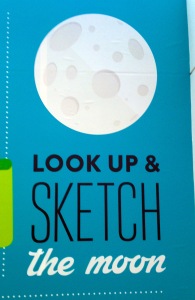
![My two sketches of the Moon. (L) The Moon from memory [not very good!] (R) A direct sketch at full moon. [Images: S. Larson]](https://writescience.files.wordpress.com/2016/05/moonsketches_eyes.jpg?w=500&h=237)

![Some of my sketches of the Moon. (L) The lunar terminator, made through a small birding scope. The numbers and letters are to an identification key, figured out after the observations with the aid of a detailed Moon map. (R) A telescopic sketch of the crater Archimedes. [Images: S. Larson]](https://writescience.files.wordpress.com/2016/05/moonsketches_scope.jpg?w=500&h=250)
![Galileo's sketches of the Moon always showed the unilluminated half of the Moon as well. You can and will notice this, with your naked eye and through a telescope, due to "Earthshine." [Image: Wikimedia Commons]](https://writescience.files.wordpress.com/2016/05/1024px-galileos_sketches_of_the_moon.png?w=500&h=693)
![The Moon Illusion at work over the Adler Planetarium. What my eye saw (sketch on the Left) and what my camera captured (picture on the Right) are significantly different! [Images: S. Larson]](https://writescience.files.wordpress.com/2016/05/adlermoon.jpg?w=500&h=250)
![The Moon is always up there, waiting for you to notice it, providing intriguing and beautiful opportunities to snap a picture or make a quick sketch. Look up! [Image: S. Larson]](https://writescience.files.wordpress.com/2016/05/copernicusmoon.jpg?w=500&h=375)

![Blake's painting of "Malevolence." [From the collection of the Philadelphia Museum of Art]](https://writescience.files.wordpress.com/2016/04/blake_malevolence.jpg?w=224&h=300)
![The most common types of clouds, only a few of the more than 60 types classified. [Image: Wikimedia Commons]](https://writescience.files.wordpress.com/2016/04/wikimedia_cloud_types.jpg?w=500&h=235)

![A classic example of Kelvin-Helmholtz clouds, created when different layers of wind slide across one another. [Image: Wikimedia commons]](https://writescience.files.wordpress.com/2016/04/wikimedia_wavecloudsduval.jpg?w=500&h=235)

![There are many patterns to be seen in textiles, all of them made by humans. The patterns your eye can see, as well as the underlying patterns in the weave of fabric. Patterns occur on all levels. [Images: S. Larson]](https://writescience.files.wordpress.com/2016/04/textiles_1800.jpg?w=500&h=500)

![A classic frost fern that formed on my sliding glass door this spring. [Image: S. Larson]](https://writescience.files.wordpress.com/2016/04/icefern.jpg?w=500&h=438)
![An everyday rock, picked up off a gravel path, shows a jumble of quartz crystals on its surface. [Image: S. Larson]](https://writescience.files.wordpress.com/2016/04/quartzite.jpg?w=500&h=203)
![Geodes are known for their crystal structures. The crystals are macroscopic manifestations of the underlying molecular shapes -- large patterns building from small patterns. [Image: S. Larson]](https://writescience.files.wordpress.com/2016/04/geode.jpg?w=500&h=213)
![Human patterns [streets] often follow Nature's patterns [terrain]. (L) Fort Morgan, Colorado is in the Great Plains and streets run N-S and E-W, oriented to the cardinal directions defined by the spin of the Earth. (C) In central Pennsylvania the Appalachians form long ridgelines and valleys. (R) Cities like State College, PA have street grids aligned parallel to the terrain of the mountains in the area. [Images: Google Maps]](https://writescience.files.wordpress.com/2016/04/mapsterrain.jpg?w=500&h=148)
![(L) Percival Lowell observing on the 24-inch Clark Refractor at Lowell Obseratory. (R) Lowell's map of the canals he thought he was seeing on Mars, now a classic example of seeing patterns that are, in fact, not there at all. [Images: Wikimedia commons]](https://writescience.files.wordpress.com/2016/04/lowellmars.jpg?w=500&h=205)








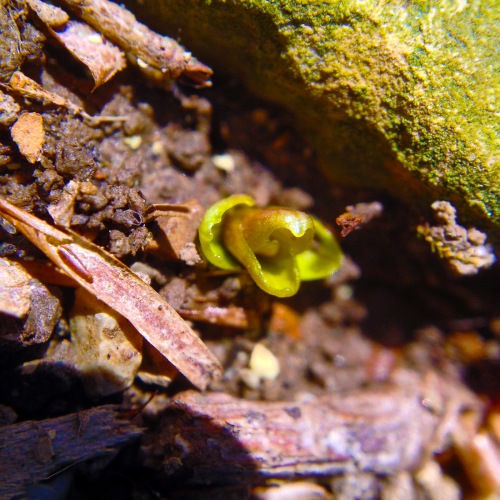
![[L] Moving the rock revealed a long root behind the little sprout. [R] I almost didn't notice the earthworm -- I thought it was another root! Our filters are powerful and can hide the world from us!](https://writescience.files.wordpress.com/2016/04/rootworm.jpg?w=500&h=250)

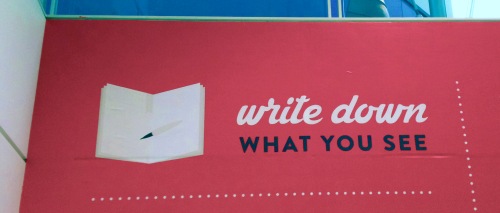
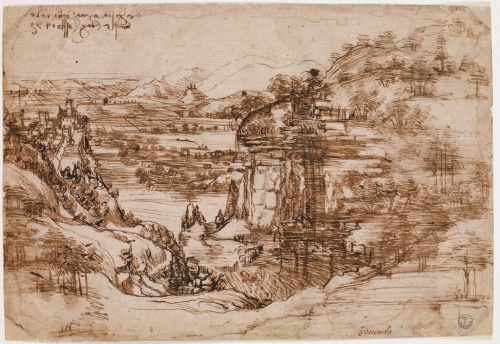
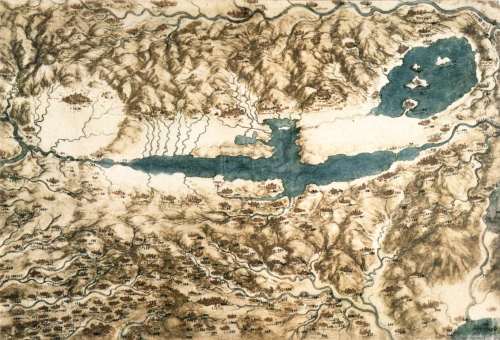
![Modern, spacecraft view of the Galilean moons, which were only dots to Galileo. Top to bottom: Io, Europa, Ganymede, Callisto. [Image: Wikimedia Commons]](https://writescience.files.wordpress.com/2016/03/jupiter_and_the_galilean_satellites.jpg?w=210&h=300)
![Galileo's notes from 1611, from observations attempting to determine the orbital period of the moons of Jupiter, written on the back of an envelope! [Image: Morgan Library]](https://writescience.files.wordpress.com/2016/03/galilei-satc3a9lites-de-jc3bapiter1.jpg?w=270&h=382)
![A collection of notebooks from around the Larson household. This is only a small sample -- I didn't even have to try that hard to find them! [Image: S. Larson]](https://writescience.files.wordpress.com/2016/03/img_4465.jpg?w=500&h=335)
![My astronomy observing notebooks are my constant diary of the dialog between me and the night sky. [Image: S. Larson]](https://writescience.files.wordpress.com/2016/03/observinglogs.jpg?w=500&h=380)
![My idea journal is my constant companion, no matter where I go. Here it is on the rim of Upheval Dome, an impact crater in Canyonlands National Park. [Image: S. Larson]](https://writescience.files.wordpress.com/2016/03/img_2633.jpg?w=500&h=333)
![Typical first pages in all my idea notebooks -- part of my ritual to get over Fear of Ruining the Notebook. [Image: S. Larson]](https://writescience.files.wordpress.com/2016/03/img_4466.jpg?w=500&h=366)
![Sometimes, we don't let people learn by preventing them from responding to their passions [Calvin & Hobbes, by Bill Watterson]](https://writescience.files.wordpress.com/2016/03/ch891018.gif?w=500&h=163)
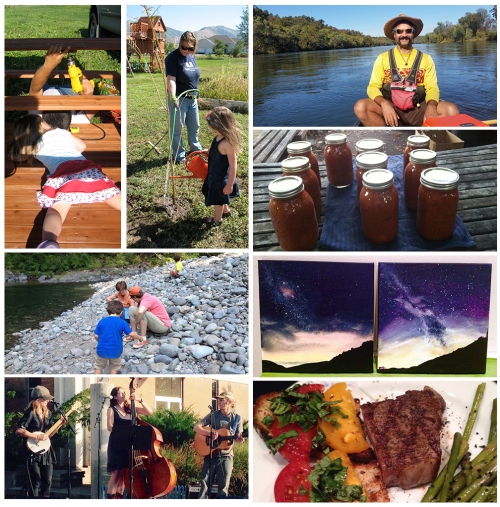
![The "Explorer Walls" at the Adler Planetarium in Chicago, located in our stairwells. [click to enlarge!]](https://writescience.files.wordpress.com/2016/03/adlerwalls_vertical.jpg?w=500&h=732)

